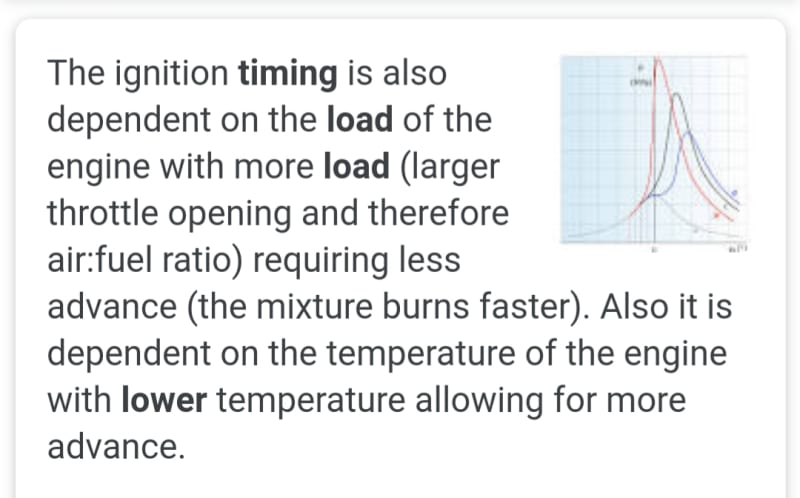I agree there are many factors affecting combustion speed. Here's a simple one I haven't seen mentioned in comments thus far...
Given:
A charge with a higher temperature ignites faster because it already has a lot of kinetic energy when the spark fires.
A charge with higher density burns faster because its molecules are more closely spaced.
Charge pressure increases by a fixed relation during compression, P2 = P1 * (V1/V2)^y
where P1 and V1 are initial pressure and volume, P2 and V2 are end pressure and volume, and y is the ratio of specific heats of air.
Charge Temperatue increases by a fixed relation during compression, T2 = T1 * (V1/V2)^(y-1)
where T1 and V1 are initial temperature and volume, T2 and V2 are end temperature and volume, and y is the ratio of specific heats of air.
Initial pressure, P1, varies with air mass, volume, and temperature, PV=mRT
where P is pressure, V is volume, m is air mass, R is the specific gas constant of air, and T is temperature.
Pressure (P) and temperature (T) follows mass (m) when outside air plus cylinder wall temperature (T) and cylinder volume (V) are held constant.
Conclusion:
Old school naturally aspirated Otto Cycle engines employ throttling to regulate load. This has the effect of reducing air mass in the cylinder which reduces initial presure (P1) of the charge. The lower initial pressure (P1) results in lower final pressure (P2) and temperature (T2) at the end of compression. The reduced mass at the end of compression also means lower density. Low charge temperature and reduced charge density result in slower combustion due to kinetics. Note a turbocharged engine manipulates air mass in the cylinder and changes conditions at the end of compression in a similar fashion.
One way to think of the impact of increasing mass in the cylinder at the start of compression is to note its similarity to increasing compression ratio; both increase pressure, temperature, and density of the charge at the end of compression. Per "
A Review of Laminar Burning Velocity and Flame Speed of Gases and Liquid Fuels" page 192:
"[A]ny increasing in compression ratio will increase flame speed... A higher compression ratio increases the pressure and temperature of the working mixture before ignition which reduce the initial preparation phase of combustion and hence less ignition advance is needed. High pressures and temperatures of the compressed mixture also speed up the second phase of combustion. Increase compression ratio [also]... increases the density of the cylinder gases during burning. This increases the peak pressure and temperature and reduces combustion duration. Thus engines having higher compression ratios have higher flame speeds."
Note:
Newer Otto Cycle engines use less throttling and operate over a wider range air/fuel ratio than old-school engines in order to reduce pumping loss (intake vacuum = lost work). As many have noted, changing the air fuel ratio has significant inpact on combustion speed and hence ignigition timing. I've elected to discuss the old school Otto Cycle with fixed air fuel ratio and a lot of throttling just to illustrate the effect of changing air mass in the cyclinder at the start of compression.


